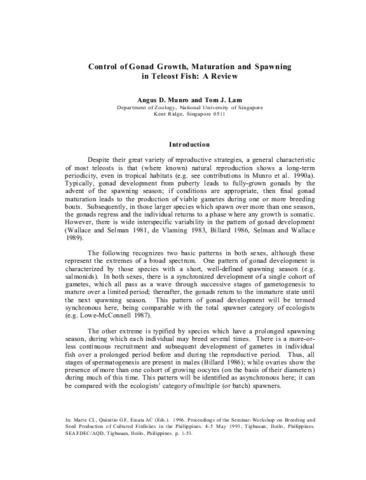Effect of juvenile hormone and serotonin (5-HT) on mixis induction of the rotifer Brachionus plicatilis Muller
- Global styles
- MLA
- Vancouver
- Elsevier - Harvard
- APA
- Help
Share
Abstract
Juvenile hormone (JH) and serotonin (5-HT) were previously shown to enhance mictic (sexual) female production of the rotifer Brachionus plicatilis in batch cultures. To explore the basis of these effects, experiments were conducted on isolated individuals. JH treatment of maternal rotifers with 5 and 50 µg ml-1 (18.8 and 187.7 µM) resulted in significantly higher (P < 0.05) mictic female production in the second (F2) and third (F3) generations. JH treatment was effective even at a lower food concentration of 7 × 105 cells ml, but it was not effective when free ammonia was added at 2.4 and 3.1 µg ml-1. Mictic female production was not increased with exposure to 5-HT up to 50 µg ml-1 (129.1 µM) concentrations. When food level was reduced to 7 × 105 cells ml-1, however, 5-HT-treated rotifers produced significantly (P < 0.05) more mictic females than the control, particularly in F3 generation. Mictic female production of 5-HT-treated rotifers did not differ from that of the control with or without free ammonia, but the intrinsic rate of natural increase (r) of 5-HT-treated rotifers at 3.1 µg ml-1 free ammonia was significantly higher than the control. These results show that juvenile hormone increases mictic female production under optimum and sub-optimum food levels, whereas 5-HT increases both mictic female production at low food level and population growth rate at high free ammonia concentrations. These compounds could be used to manage rotifer cultures and probe the mechanisms controlling the rotifer life cycle as it switches to mictic reproduction.
Suggested Citation
Gallardo, W. G., Hagiwara, A., & Snell, T. W. (2000). Effect of juvenile hormone and serotonin (5-HT) on mixis induction of the rotifer Brachionus plicatilis Muller. Journal of Experimental Marine Biology and Ecology , 252(1), 97-107. https://doi.org/10.1016/S0022-0981(00)00240-9
Type
ArticleISSN
0022-0981Collections
- Journal Articles [1258]
Related items
Showing items related by title, author, creator and subject.
-
Induction of sex inversion in juvenile grouper, Epinephelus malabaricus, (Bloch and Schneider) by bi-weekly injections of 17 alpha-methyltestosterone
Tan-Fermin, Josefa D.; Garcia, Luis Maria ; Castillo, Antonio R. Jr. (Society for the Study of Endocrinology, Metabolism and Reproduction, University of Hong Kong, 1989)
Groupers (Family Serranidae) are protogynous hermaphrodites. Natural sex inversion of different species occurs at 2-11 years of age . The scarcity of wild mature males and the length of time to change sex underline the ...
; Castillo, Antonio R. Jr. (Society for the Study of Endocrinology, Metabolism and Reproduction, University of Hong Kong, 1989)
Groupers (Family Serranidae) are protogynous hermaphrodites. Natural sex inversion of different species occurs at 2-11 years of age . The scarcity of wild mature males and the length of time to change sex underline the ... -
Control of gonad growth, maturation and spawning in teleost fish: A review
Munro, Angus D.; Lam, Tom J. (Aquaculture Department, Southeast Asian Fisheries Development Center, 1996)Despite their great variety of reproductive strategies, a general characteristic of most teleosts is that (where known) natural reproduction shows a long-term periodicity, even in tropical habitats (e.g. see contributions ... -
Influence of LHRHa and methyltestosterone on milt production of sea bass Lates calcarifer (Bloch)
Hilomen-Garcia, G. V.; Baldevarona, R. B.; Lacanilao, F. J. (Aquaculture Department, Southeast Asian Fisheries Development Center, 1996)Milt volume, sperm density, and number of spermatozoa were determined to quantify milt production of mature sea bass after a single injection of LHRHa [(D-Ala6,Pro9-N-ethylamiide)LHRH] in saline solution and 17α-methyltestosterone ...





